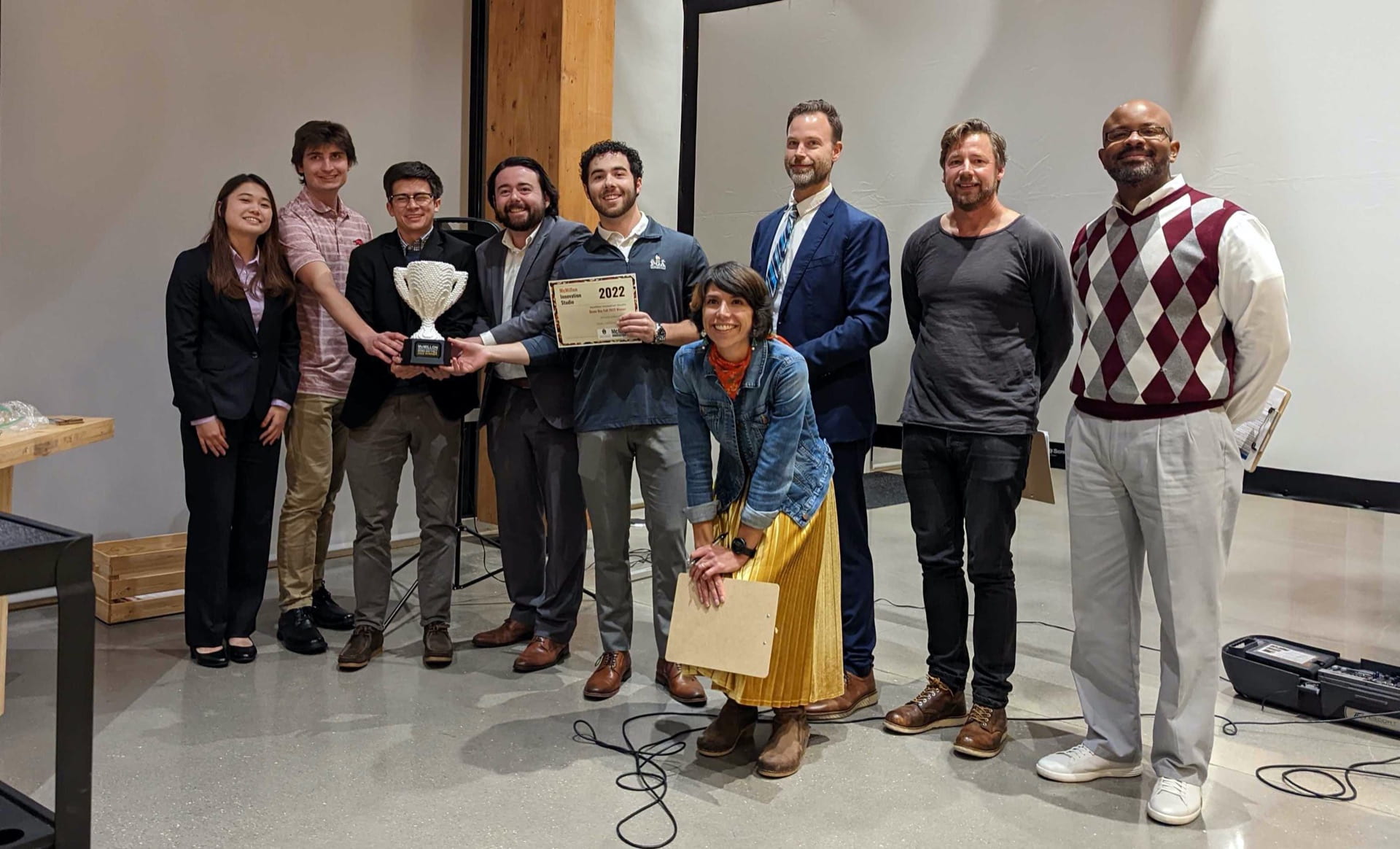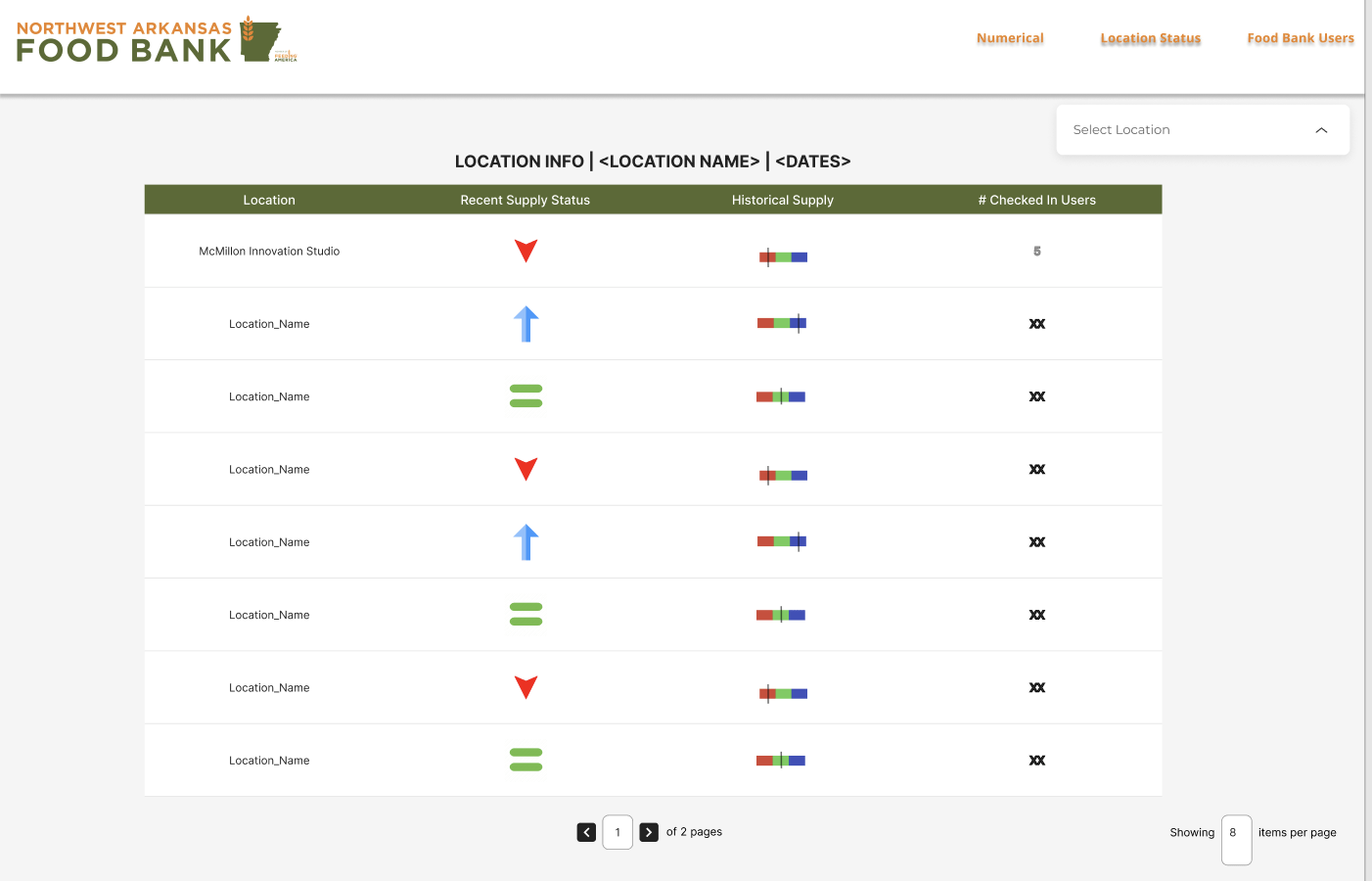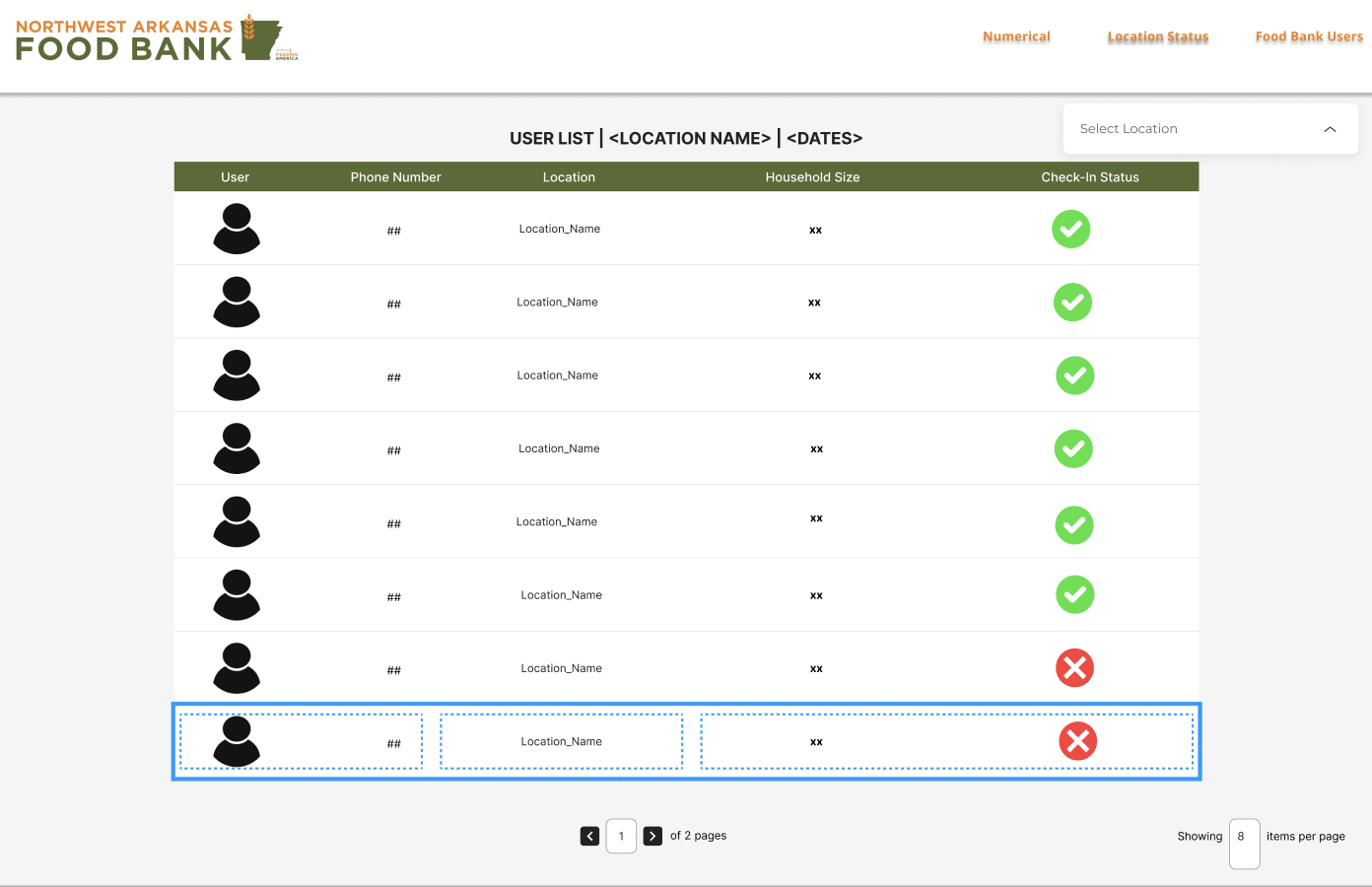
Jack Norris (third from left) and his team were named overall winners by the judges (right) at the McMillon Innovation Studio’s 2022 Demo Day
Jack Norris is a third year Honors College Fellow from Rogers, AR, studying computer science and pre-med. Last fall, he participated in the McMillon Innovation Studio’s Demo Day event as part of an interdisciplinary team of students that developed a digital dashboard tool for the Northwest Arkansas Food Bank. Their team, which participated in the studio’s new social impact design track which partners with local nonprofits, was named overall winner of the event.
1. What inspired you and your teammates to start working with the food bank to solve its logistical challenges?
I’ve been involved with the McMillon Innovation Studio since freshman year, and a lot of previous projects have been oriented towards a more corporate environment. That was what I was interested in my freshman year, but as I got more exposed to things on campus and through a variety of other experiences, I grew to have an interest in service-oriented work. Consequently, the McMillon Innovation Studio also ended up developing a social impact design branch where they worked with nonprofits in the area. This year, as I read some of the problem statements that the nonprofits proposed to us with regards to kind of the skill set that I have, the Northwest Arkansas food banks, really appealed to me the most. And not just because of the skill set match, but because I know how big of an issue food insecurity is an Arkansas. In high school, I played in an orchestra and we’d raise funds for the Northwest Arkansas food bank, so I had a bit of a tie there. It was one of those things where the interest in this skill matched up.
2. What was your approach to creating the dashboard tool prototype? How did you come up to that as a solution to that particular problem?
The dashboard tool started when our team peeled back the curtain on the processes in place at the Northwest Arkansas Food Bank, particularly their mobile pantry operations. We saw that it was a lot of jumbled up spreadsheets, a lot of inaccurate order estimates for food supplies without a ton of numerical backing behind the decisions made. When we saw that our team thought that maybe they can benefit from a system that does a lot of the number-crunching for them.
We first thought we’d maybe just make an Excel spreadsheet that throws all this data in there. But Excel definitely takes some time to learn, and it’s got a lot of features that you might not necessarily need. We wanted to cut away some of the fat with Excel and put the data into a system that was easily digestible for anyone, because the folks that typically do nonprofit work don’t necessarily come from super technical backgrounds. We wanted to kind of keep it simple, easy to use and user-friendly.
We also wanted to implement a check-in system for the Food Bank users, so we also developed a prototype text messaging system. One of the biggest issues the food bank had was accurately allocating food supplies to each of their mobile locations. They felt that a check-in system would help them the most. The messaging feature actually fed directly into the dashboard, so in addition to it being a hub for the food bank, the management can see that they had this many people come to a location, if they had a surplus one day, or a deficit another day. It also enabled them to see how many people pre-checked in or said that they’re coming in tomorrow.
3. How was your experience working with fellow students from different majors and different disciplines on the project?
I came from a computer science background, so I knew I definitely saw things with a tech slant. In some cases, I wanted to go with a more technical approach, and then folks that weren’t necessarily from a more technical major, were able to pull me back to get the bigger picture of things. I think that diversity of the team and just coming from a variety of colleges on campus, was really instrumental in the conception of the idea and its success.
4. What does what does human-centered design mean to you?
For me, I think human-centered design is about every decision you make—whatever the reason is for it—and how you can somehow draw a direct line to the person who’s using it. Something that we say at the studio a ton is that you don’t want to be a solution looking for a problem. I think that when you take the human-centered design approach and really empathize with the customer and their needs, it kind of just ensures that you’re finding a solution to problems that they’re having. That you’re making decisions that, in all, benefit that end user.
5. Did participating in this year’s demo day impact what you want to do after school or like your research interests?
When I came in my freshman year, I started out as a computer science and finance major. Over time, especially after I did a couple of internships, I had a period where I didn’t know if this was necessarily something that I wanted to do. Subsequently, I switched, and now I’m computer science and pre-med, and so I’m taking the pre-med courses and whatnot. And I think this experience definitely helped solidify my interest in more service-oriented work. Because for me, it’s just more fulfilling.
Something I will say is, although we did a bunch of this great work for the food bank, I think something that’s kind of stunk is trying to move forward with it.The thing that’s almost holding it back is that the food bank just isn’t staffed enough to implement something like this, because implementing a new system would take a lot of work on their end. Working in the nonprofit division, doing things out of the goodness of your heart can only do so much. It’s made me think about how I’d like to go into a service sector with the hope of making things more efficient, per se, and give more into it.


